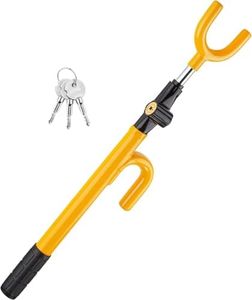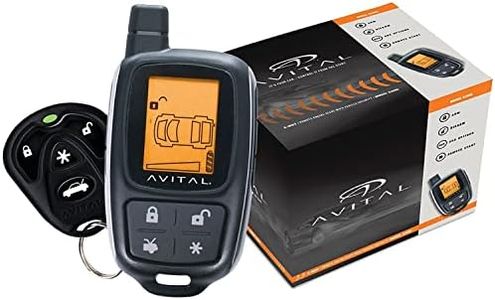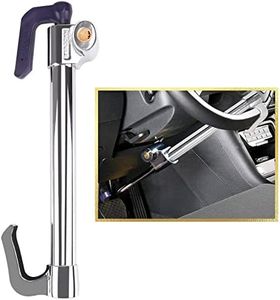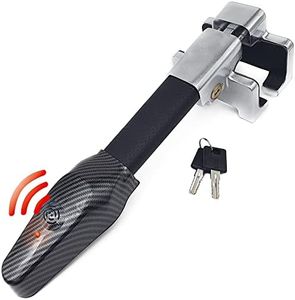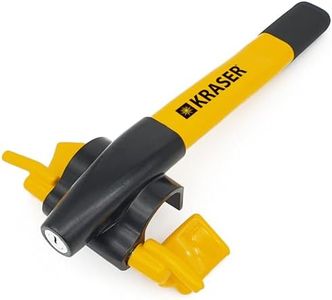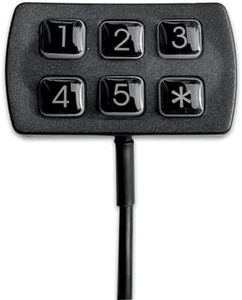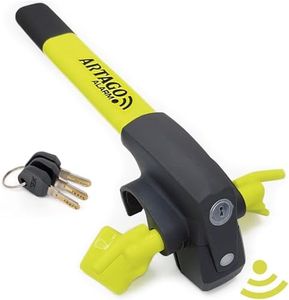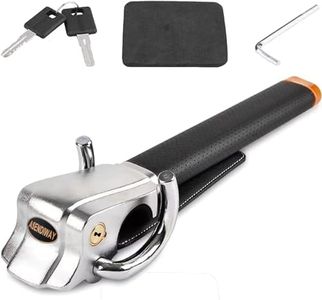We Use CookiesWe use cookies to enhance the security, performance,
functionality and for analytical and promotional activities. By continuing to browse this site you
are agreeing to our privacy policy
10 Best Car Anti Theft System
From leading brands and best sellers available on the web.Buying Guide for the Best Car Anti Theft System
Choosing the right car anti-theft system can make a huge difference in keeping your vehicle safe and giving you peace of mind. The best system for you will depend on your car type, your daily routine, and the level of security you want. It’s important to understand what features these systems offer and how they protect your car so you can make an informed choice that fits your needs.Type of SystemCar anti-theft systems come in several main types, such as alarms, immobilizers, steering wheel locks, GPS trackers, and kill switches. The type of system refers to how the device works to prevent theft. For example, an alarm sounds a loud noise if someone tampers with your car, while an immobilizer prevents the engine from starting without the proper key or code. Steering wheel locks are physical barriers, and GPS trackers help you locate your vehicle if it’s stolen. Decide if you want a system that scares away thieves, prevents theft altogether, or helps recover your vehicle after theft. This decision depends on where you park, how valuable your car is, and how much hassle you’re willing to deal with.
Installation ComplexitySome anti-theft devices are easy to put in place yourself, like steering wheel locks, while others require professional installation, such as immobilizers or sophisticated alarm systems. Installation complexity means how much effort and technical knowledge is required to set up the security device. If you’re comfortable with DIY projects, a simple system may be sufficient. If you prefer a more hidden or integrated solution, you might look for systems that a professional can install seamlessly. Consider how much time and effort you’re willing to invest in the setup process.
Detection and Alert FeaturesMany anti-theft systems come with sensors that detect motion, glass breakage, or attempts to open the doors, and then trigger alerts. Detection features determine how sensitive and smart the system is at identifying threats. Some systems send real-time notifications to your phone, while others rely on loud sirens only. More advanced options might differentiate between a false alarm (like a cat jumping on your car) and an actual break-in. Think about whether you want instant alerts wherever you are, or if you’re satisfied just knowing that your car will make noise to scare off intruders.
CompatibilityNot every anti-theft system works with every make, model, or year of vehicle. Compatibility means how well the device fits or connects with your car’s existing technology and physical features. Some electronic immobilizers or trackers are designed for newer vehicles only, while basic mechanical devices are universal. Before committing, check if the system you’re looking at works with your specific car. This can help you avoid the disappointment of buying something you can’t use.
Power Source and BackupAnti-theft devices need power to function, either from your car’s battery, an internal battery, or both. The power source determines if the device remains active at all times, even when your vehicle is off. Some systems have battery backups so they keep running even if a thief tries to disconnect your car’s main battery. If you park in places for long periods or worry about battery drain, look for systems with power-saving mode or backup power to ensure continuous protection.
Visibility and DeterrenceSome anti-theft systems are clearly visible (like steering wheel locks or blinking LEDs), while others are hidden. Visibility can be a powerful deterrent: when a thief sees a visible security measure, they may move on to an easier target. On the other hand, hidden systems like electronic immobilizers or trackers might protect you if a thief tries to defeat visible locks. Decide whether you want a deterrent that shows, a hidden defense, or ideally a combination of both. Your daily environment—such as whether you park in public or private spaces—can guide this choice.


